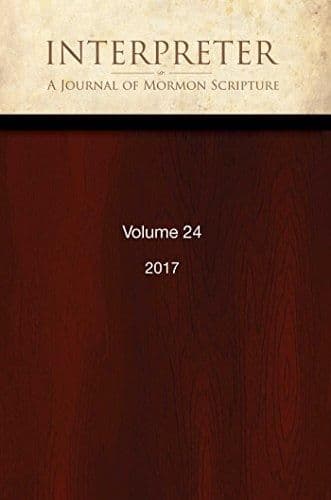Journal
“In the Mount of the Lord It Shall Be Seen” and “Provided”: Theophany and Sacrifice as the Etiological Foundation of the Temple in Israelite and Latter-day Saint Tradition

Title
“In the Mount of the Lord It Shall Be Seen” and “Provided”: Theophany and Sacrifice as the Etiological Foundation of the Temple in Israelite and Latter-day Saint Tradition
Publication Type
Journal Article
Year of Publication
2013
Authors
Bowen, Matthew L. (Primary)
Journal
Interpreter: A Journal of Latter-day Saint Faith and Scholarship
Pagination
201-228
Volume
5
Abstract
For ancient Israelites, the temple was a place where sacrifice and theophany (i.e., seeing God or other heavenly beings) converged. The account of Abraham’s “arrested” sacrifice of Isaac (Genesis 22) and the account of the arrested slaughter of Jerusalem following David’s unauthorized census of Israel (2 Samuel 24; 1 Chronicles 21) served as etiological narratives—explanations of “cause” or “origin”—for the location of the Jerusalem temple and its sacrifices. Wordplay on the verb rāʾâ (to “see”) in these narratives creates an etiological link between the place-names “Jehovah-jireh,” “Moriah” and the threshing floor of Araunah/Ornan, pointing to the future location of the Jerusalem temple as the place of theophany and sacrifice par excellence. Isaac’s arrested sacrifice and the vicarious animal sacrifices of the temple anticipated Jesus’s later “un-arrested” sacrifice since, as Jesus himself stated, “Abraham rejoiced to see my day” (John 8:56). Sacrifice itself was a kind of theophany in which one’s own redemption could be “seen” and the scriptures of the Restoration confirm that Abraham and many others, even “a great many thousand years before” the coming of Christ, “saw” Jesus’s sacrifice and “rejoiced.” Additionally, theophany and sacrifice converge in the canonized revelations regarding the building of the [Page 202]latter-day temple. These temple revelations begin with a promise of theophany, and mandate sacrifice from the Latter-day Saints. In essence, the temple itself was, and is, Christ’s atonement having its intended effect on humanity.
Subject Keywords
Bibliographic Citation
Terms of use
Items in the BMC Archive are made publicly available for non-commercial, private use. Inclusion within the BMC Archive does not imply endorsement. Items do not represent the official views of The Church of Jesus Christ of Latter-day Saints or of Book of Mormon Central.